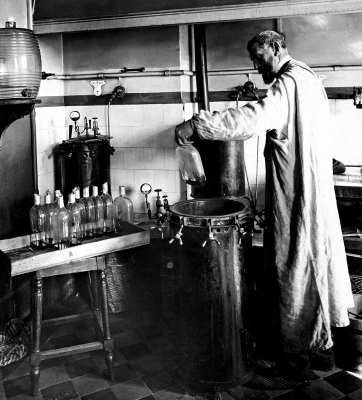
Pasteur’s experiments with germs and wine revealed a direct cause-and-effect relationship between bacteria and the souring of wine into vinegar. Subsequently, he invented a process by which bacteria could be killed by heating the wine between 60 and 100° C, then letting it cool. Pasteur completed the first successful test on April 20, 1862, eventually patenting the method we now know as pasteurization, which was soon applied to beer, juice, eggs, and (most famously) milk. This process also proved successful at destroying most yeasts and molds without causing a phase transition in the product.
The temperature and time of pasteurization treatments are determined by the food’s acidity. In acidic foods (pH < 4.6) such as fruit juice, in which pathogens are unable to grow, heat is applied to inactivate enzymes and destroy yeast and lactobacillus. In less acidic foods (pH > 4.6), such as milk, the heat treatments are designed to destroy pathogens, as well as yeast and molds. Both processes extend the product’s shelf life, especially in combination with refrigeration.
Food can be pasteurized in two basic ways: either before or after being packaged into containers. When food is packaged in glass, hot water is used to lower the risk of thermal shock. If packaged in plastic or metal, steam can be used, since the risk of thermal shock is low. In general, most foods requiring pasteurization are liquid (such as milk), and can therefore move through a continuous system comprised of a heating zone, hold tube, and cooling zone, from which the liquid is filled into packaging.
Credit : Smart Sense
Picture Credit : Google




